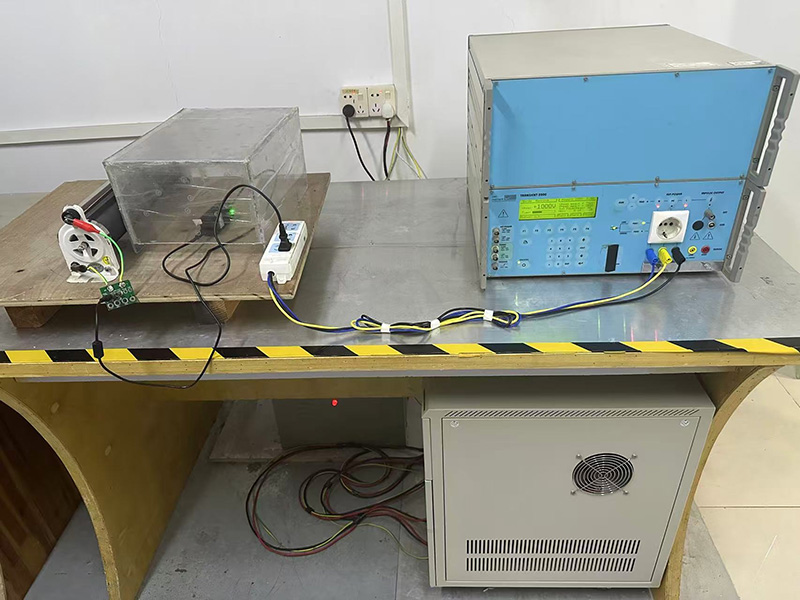Voltage sag and interruption (Dips & Interruptions) test

Details
Voltage Dips and Short Interruptions tests are used to assess the immunity of electrical equipment in the event of sudden drops in grid voltage or brief power outages. The following is the globally recognized testing standard system and implementation norms:
1. Core international standards:
IEC/EN 61000-4-11 (Basic Standard, Applicable to equipment ≤16A)
- Test waveform:
- Voltage Sag (Dips) : Sudden voltage drop to 0%, 40%, 70% of the rated value (other grades are optional)
- Short interruption (Interruptions) : voltage drops to 0%
- Duration: 0.5 cycles to 300 cycles (10ms to 6s for 50Hz systems)
- Test level:
| Test type | Residual voltage value | Typical duration (50Hz) | Applicable scenarios |
| Voltage sag | 70% | 10ms ~ 500ms | Simulated short-circuit fault |
| Voltage sag | 40% | 100ms ~ 1s | Motor starting impact |
| Short-term interruption | 0% | 5s ~ 300 cycles | Power grid switching operation |
IEC/EN 61000-4-34 (Supplementary Standard for > 16A Equipment) :
Extended testing methods for high-current equipment such as industrial motors and transformers
IEC/EN 61000-4-29 (Test for DC Power Supply Port) :
- Applicable to DC power supply equipment (such as communication base stations, photovoltaic systems)
2. Industry-specific standards:
Industrial equipment
- IEC 61800-3 (Frequency converter) :
It is required to withstand a 70% voltage drop of 0.5 seconds without going offline
Medical equipment
- IEC 60601-1-2:
Life support equipment must pass the 0% voltage interruption for 5 seconds test (Performance criterion B)
Photovoltaic inverter
- IEC 62116:
When the specified voltage drops to 20%, it is required to remain connected to the grid for 0.1 seconds without disconnection
Automotive electronics
- ISO 16750-2:
- Simulate the voltage drop when the vehicle starts (minimum 6V for 100ms)
3. Test Equipment and configuration:
- Key equipment:
- Programmable AC power supply (such as Keysight AC6800 series)
- Voltage sag generator (meeting IEC 61000-4-11 waveform requirements)
- Data logger (for capturing voltage/current transient responses) --
4. Test Procedure (taking IEC 61000-4-11 as an example) :
1). Pretreatment: The equipment operates stably at the rated voltage;
2). Phase synchronization: Trigger a sag for the AC power supply at phase angles of 0°, 90°, 180°, and 270°.
3). Test combination:
-70% voltage sag × 10 times (duration: 0.5T/1T/5T/10T)
-0% interruption × 5 times (duration: 250T)
4). Functional criteria:
Grade A: Normal function during and after the test;
Grade B: Temporary loss of function, automatically restored after testing;
Grade C: Manual intervention is required for recovery.
5). Global certification differences:
- EU (CE) : EN 61000-4-11 is the harmonized standard, and industrial equipment usually needs to meet 70% sag (500ms).
- China (GB) : GB/T 17626.11 is equivalent to the IEC standard
- North America: IEEE 1346 provides guidelines for voltage sag compatibility assessment (non-mandatory)
5. Special Application Requirements
- Data center: It is required to pass the 20ms interruption test as stipulated in EN 50600-4-1 (corresponding to ATS switching time).
- New energy grid connection: IEC 61400-21 requires wind turbine units to withstand an 85% voltage sag of 625ms

 Scan WeChat to chat
Scan WeChat to chat